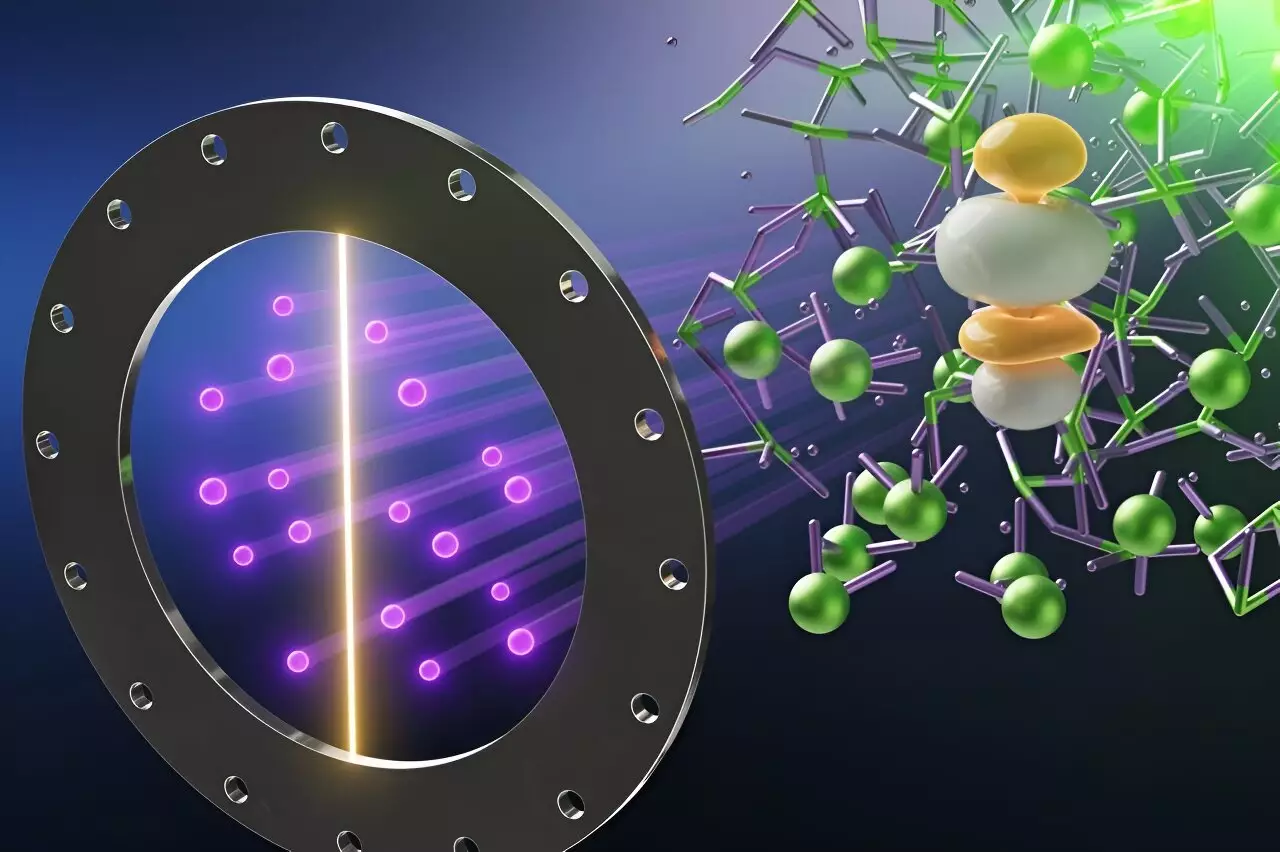Recent advancements in nuclear fuel research have brought to light the intriguing properties of liquid uranium trichloride (UCl3), a compound garnering attention as a potential cornerstone for next-generation nuclear reactors. A pivotal paper published in the Journal of the American Chemical Society presents groundbreaking analysis on the chemistry dynamics and molecular structure of UCl3 in its molten state. This research, spearheaded by experts from Oak Ridge National Laboratory (ORNL) and other esteemed institutions, provides critical insights that may shape the future of nuclear energy, especially amidst the pressing global need for sustainable energy sources.
Background: The Context of Molten Salt Reactors
For decades, molten salt reactors have been heralded for their promise in generating safe, efficient nuclear energy. The potential of these systems was initially demonstrated by ORNL in the 1960s, an era when nuclear technology was at the forefront of energy innovation. However, with the recent surge in emphasis on decarbonization, researchers worldwide are eager to revisit and refine these technologies. Designing effective molten salt reactors necessitates an intricate understanding of liquid fuel salts, particularly as they differ significantly from traditional reactors that utilize solid uranium dioxide pellets. The microscopic interactions occurring in these substances are complex and significant, especially given the radioactive nature of uranium.
The Challenges of High-Temperature Chemistry
The investigation of liquid uranium trichloride poses a unique set of challenges owing to its high melting point and the intricate behavior of actinides in general. Unlike conventional chemical compounds, the interactions and behaviors of these radioactive elements demand advanced analytical techniques. The unconventional ion coordination chemistry and the extreme temperatures—which can exceed 900 degrees Celsius—have historically rendered thorough investigations nearly impossible. Understanding these phenomena is essential for predicting how such materials will behave under operational conditions in future nuclear reactors.
The research collaboration involved ORNL, Argonne National Laboratory, and the University of South Carolina, employing cutting-edge methods to study UCl3. Utilizing the Spallation Neutron Source (SNS), one of the world’s leading neutron facilities, the team was able to examine the atomic-level interactions of UCl3 in a molten state. Neutron scattering techniques allowed researchers to visualize atom positions and movements through interactions with neutron beams, resembling the dynamics of pool balls colliding on a table. This method proved invaluable, revealing comprehensive data that could inform both theoretical models and practical reactor designs.
Surprising Discoveries about Molecular Dynamics
Among the most captivating findings of this study is the observation of bond lengths between uranium and chlorine as UCl3 transitioned to its liquid form. Contrary to conventional chemistry that often associates heat with expansion, the research displayed a reduction in bond lengths at elevated temperatures. Furthermore, fluctuations in bond length were observed, indicating a dynamic oscillation where bonds occasionally tightened beyond traditional expectations and sometimes expanded to unusual lengths. This oscillating behavior not only challenges established chemical principles but also enriches our understanding of molecular interactions in high-temperature environments.
The revelations from this research extend far beyond academic interest; they hold profound implications for the future of nuclear reactor design. By demystifying the complex behaviors of actinide salts under extreme conditions, the findings could enhance the efficiency and safety of molten salt reactors. The insights contribute to the development of predictive models that are crucial for reactor design, paving the way for innovative solutions to nuclear waste management and other critical challenges in the nuclear field.
The study of liquid uranium trichloride stands as a significant milestone in nuclear chemistry, offering vital knowledge that can reshape future research and applications. As the world grapples with the challenges of energy sustainability and climate change, understanding materials like UCl3 is paramount. The complex dynamic behaviors uncovered in this research are not merely academic curiosities; they represent a key to unlocking the potential of molten salt reactors and, by extension, a cleaner energy future. With continued research and collaboration, we stand on the brink of revolutionary advancements in the field of nuclear technology, fostering innovations that could yield safe, affordable energy for generations to come.

